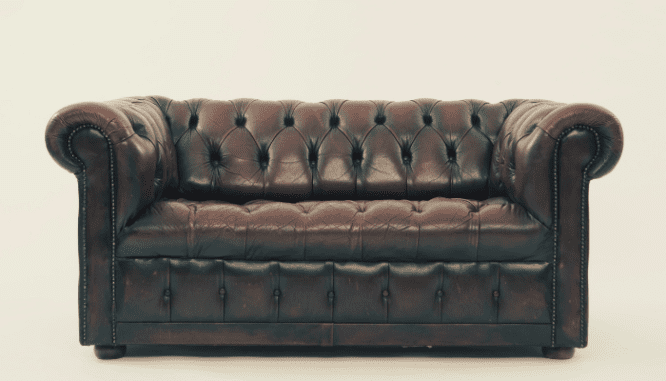4 Tips for Pricing Furniture When You Sell a House
- Published on
- 5 min read
-
 Gina Rodrigues Contributing AuthorClose
Gina Rodrigues Contributing AuthorClose Gina Rodrigues Contributing Author
Gina Rodrigues Contributing AuthorGina is a freelance writer and editor who specializes in real estate and personal finance. She brings more than ten years of experience as a licensed agent and property investor. When she isn’t writing, she can be found tending to the sheep and chickens at her suburban homestead outside of Seattle. Gina holds a B.A. in English from California State University.
When it comes to pricing and selling furniture with your home sale, top real estate agent Gillian Redman, who has 15 years of industry experience, doesn’t mince words of warning.
“The [real estate] agent needs to be proficient in how to handle this,” she cautions. “It can kill the deal if not handled correctly.”
Redman says that selling a home fully furnished is a common practice in her market in Four Corners, Florida, pointing out that vacation homes and high-end luxury homes are often sold with furniture included. Furnished properties are especially attractive to out-of-area buyers who want to avoid the drama of lugging furniture across state lines.
But how much should you charge for the furniture in your home? We asked Redman for her take on what to consider when pricing home furnishings and negotiating with a buyer. We’ll also detail potential pitfalls to watch out for when structuring the sale of a fully furnished home.

1. Research your furniture’s value
Redman says that in most cases, the seller comes up with a starting figure for their furniture. Then the buyer and seller negotiate from there. Here are some tips for homing in on a price:
Set realistic expectations. Don’t expect a high resale value for most secondhand furniture. “Furniture is very much like vehicles. The minute you take them out of the showroom, they’ve lost value considerably.” Homeowners often receive less than 50% of their furniture’s original purchase price, Redman notes.
Consider the furniture’s age, condition, and design style. These factors all affect resale value. A sold-out dining table from Restoration Hardware’s latest catalog will garner more interest than a stained Ikea lounge chair bought 15 years ago.
Compare pricing on online marketplaces. Search websites like Craigslist and eBay for an idea of what similar furniture sells for in your area.
Reference antique price guides and auction websites. Not sure if your Chippendale desk has value? Compare values on the Kovels price guide, WorthPoint, or Ruby Lane.
Hire a furniture appraiser. It may be worth hiring a professional if you have high-end, high-value pieces, such as rare antique furniture. Contact an appraiser or dealer who specializes in the type of furniture you’re selling. Sotheby’s also offers a complimentary online estimate.
2. Negotiate the value of your furniture alongside your home sale
Once you have an idea of what your furniture is worth, use that data to negotiate with buyers. “Generally, the seller has a figure in their head [of] what they want to get for the furniture,” says Redman. But that number isn’t usually what the seller ends up getting, she adds.
When negotiating the deal, keep these factors in mind:
Look at the sale from the buyer’s point of view. Find out how motivated the buyer is to secure a furnished home to determine how much leverage you have in negotiations. Buyers looking to have the home furnished quickly are more likely to pay for the convenience of a furnished home.
For example, say the buyers plan to buy the home as a vacation rental. Keeping the furniture in place makes it easier for them to rent out the property as soon as they take ownership, rather than removing it from the rental market to order furniture and redecorate.
On the other hand, if the buyers are planning to live in the home and would rather redecorate the space to their tastes, you’ll probably need to be flexible with your furniture pricing strategy.
Consider how market conditions may influence the deal. The real estate market can also come into play with furniture pricing. If it’s a seller’s market, with low home inventory and high buyer demand, a buyer may be more willing to meet your price — for both your home and the furniture. But in a buyer’s market, where the buyer has several properties to choose from, negotiating a top price can become more challenging.
Sell the “sizzle.” In some instances, furniture can act as a marketing tool for a home sale. The buyer could fall in love with the furniture, giving it incalculable value. “That plays a big part in higher-end [homes],” Redman says, “where people ‘buy the dream.’”
If you have next-level interior design skills or hired a professional designer to spruce up your space, some buyers could be willing to pay a premium for design work that’s already done for them. If the buyer “loves the layout of the home and how the furniture fits in it, that becomes priceless in a way to them,” Redman comments.

3. Logistics: Structure the furniture sale carefully
Redman advises homeowners to work with a real estate agent who has experience selling fully furnished homes. Improperly structuring the sale could cause lending issues for the buyer, putting the entire transaction at risk. We dug into three different methods real estate agents use to structure furnished home sale deals.
Option #1: Include the furniture as a package sale with the property
Sellers can list the home as a turnkey property, with all furnishings included in the sale. In Redman’s market, this is the most common way to sell a furnished home.
When pricing the home, the agent markets the home as a package under a single sales price rather than itemizing the furniture. The agent allots zero value for the furniture on the purchase agreement.
The reason for valuing the furniture at zero? When buyers and sellers itemize the furniture’s value, lending guidelines categorize the amount as a sales concession. The lender then reduces the home’s value by the concession amount, which could affect the buyer’s ability to complete the sale.
For example, a purchase agreement for $500,000 that includes $25,000 of itemized furniture would result in a lender value of $475,000. When calculating the buyer’s loan amount, the lender would use the lower market value, reducing the buyer’s loan amount. Instead of borrowing 80% against $500,000 ($400,000), the buyer could be limited to 80% of $475,000 ($380,000). Assigning the furniture zero value eliminates the sales concession reduction, keeping the lender’s value at $500,000.
But there’s one caveat. The home will still need to appraise at the purchase price. In our example, the home must appraise at $500,000.
Option #2: Itemize the furniture as a sales concession
With this method, used less frequently, the seller and buyer itemize the furniture on the purchase agreement.
If this pricing method applied to our example home sale above, the lender would deduct the furniture valuation as a sales concession from the property value and reduce the buyer’s loan amount to account for the value of the furniture which they will not include in the loan. The buyer would borrow $380,000 instead of $400,000. To complete the sale, the buyer would then need to contribute an additional $20,000 in cash to the seller for the furniture.
Redman points out a potential tax implication of selling furniture this way: Selling a furnished home could trigger sales tax requirements, depending on your local jurisdiction. The seller or real estate agent could collect the sales tax based on the furniture value and remit payment to the local taxing authority.
Option #3: Sell the furniture as a separate transaction, apart from the home sale
You can also sell your furniture as a separate sales transaction, apart from the contract on your home. Instead of including the furniture on the home’s purchase agreement, the seller draws up an itemized bill of sale. Then the buyer and seller coordinate payment for the furniture outside of the home sale.
This separate sale would take place alongside but not be incorporated into the sale of the home. The furniture transaction would not show up on the final settlement statement at closing. Instead, the seller would be responsible for negotiating the sale of the furniture and collecting the subsequent payment from the buyer.

4. Think twice before offering to sell the furniture
Is it worth selling your furniture along with your home? That depends. Consider these factors before agreeing to include your furniture with the sale of your home:
- The convenience and cost savings of not having to move, store, or resell the furniture after you sell your house: Selling the furniture with your home can help reduce the stress of moving.
- The value of furniture that attracts buyers: In certain cases, an appealing design style can help market your home. On the other hand, buyers in some markets may prefer an empty home that they can personalize. Understanding what buyers in your market want can sway whether or not you decide to sell your furniture.
- Whether you need the furniture: Are you downsizing from a suburban estate home to a cozy beachside bungalow? If your new home is a different size or style than your current one, selling the furniture with your house could be a convenient option.
- The potential to sell unique or antique pieces for a higher price at auction or to a private party: If you have several high-value pieces, there’s a chance you can garner more money by selling your furniture separately rather than with your home.
Selling a furnished home doesn’t have to be a minefield
Selling your furniture with your house adds a layer of complication to the sale. However, if you research your furniture’s resale value, negotiate a fair price with the buyer, and structure your sales contract properly, you can sell your home and dodge the task that most sellers dread — moving the furniture.
Header Image Source: (Sidekix Media / Unsplash)
